#fashion history museum
Photo
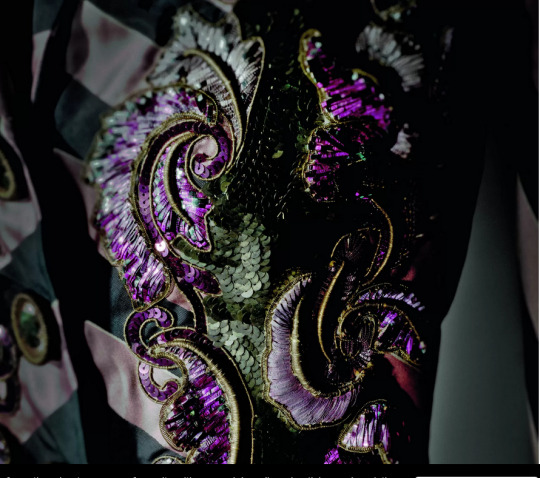
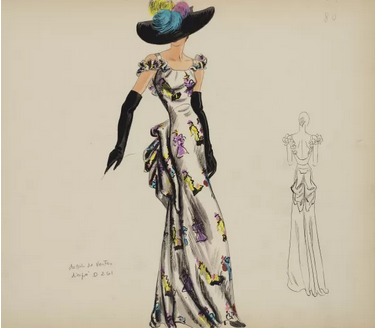
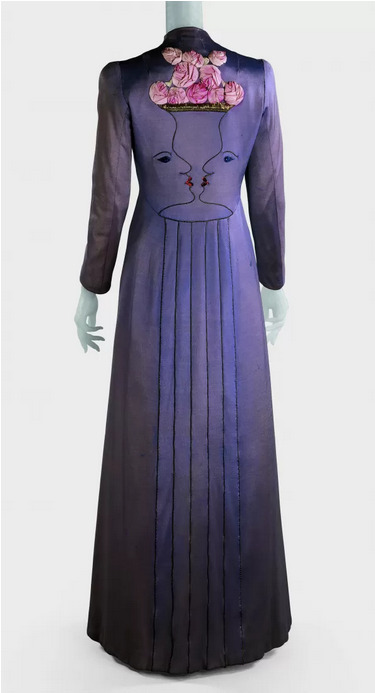
"Shocking ! Les Mondes Surréalistes d’Elsa Schiaparelli”
The Musée des Arts Décoratifs in Paris has a show running through January 2023 looking at Schiaparelli and surrealist art which surrounded and sometimes inspired her. Of course, she also made less novel designs, but these are what she is best known for. Even if you find the trompe l’oiel, or fool-the-eye efforts a little silly in a garment, you can surely appreciate the fine work of the couture workers who created them.
This show bring together more than 500 works with over 200 looks, garments, and accessories by Schiaparelli and the rest of the objects include paintings, sculptures, jewelry, ceramics, and photographs by by contemporaries like Man Ray, Salvador Dalí, and Jean Cocteau.
You will need tickets to attend the show. For more info, go here: https://madparis.fr/Shocking-Les-mondes-surrealistes-d-Elsa-Schiaparelli
#elsa schiaparelli#shocking#shocking les mondes surrealistes d'elsa schiaparelli#musee des arts decoratifs#1920s fashion#1930s fashions#costume exhibition#fashion exhibition#dress exhibition#costume history#dress history#fashion history#costume history museum#dress history museum#fashion history museum#fashion#surrealism#man ray#jean cocteau#salvador dali
66 notes
·
View notes
Text
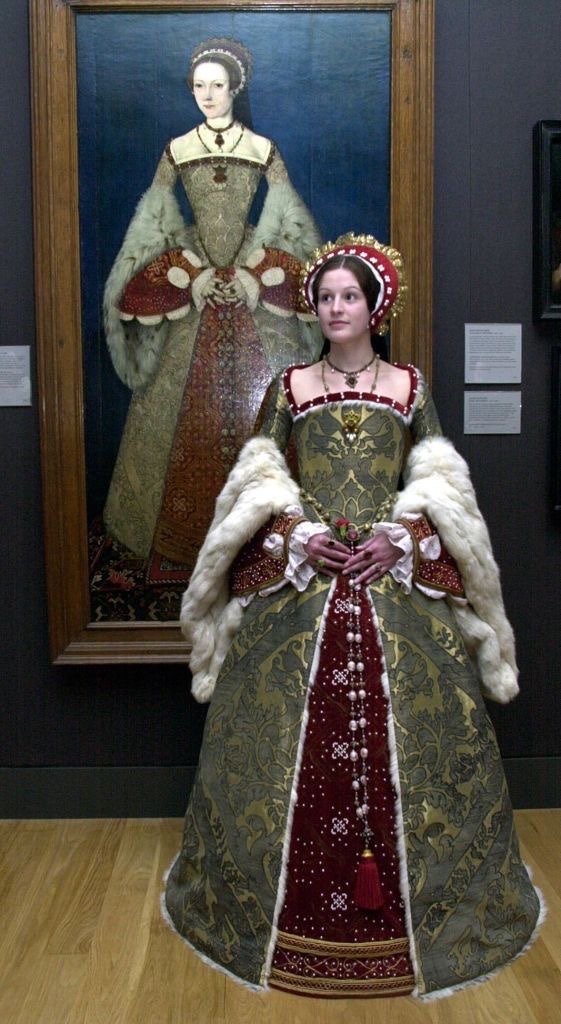
Annika Caswell a student from the Wimbledon School of Art wardrobe department, dressed as Catherine Parr, next to her portrait attributed to Master John, c. 1545 in the National Portrait Gallery, London. * The students are recreating portraits dating from the Tudor period to the 19th century which have been inspiration for their lavish costumes . (Photo by Rebecca Naden - PA Images/PA Images via Getty Images)
#art#artwork#fashion#historical#historical fashion#historical clothing#historical dress#history#long dress#museum#art school#the tudors#tudor history#tudor era#elizabeth tudor#fashion dress#dresses#dress#Catherine Parr#henry viii#1400s#1500s#england#high fashion#historical costuming#painting#dress up#red#green#beautiful
5K notes
·
View notes
Photo

Dressing Gown
1878-1879
United States
Peabody Essex Museum (Object Number: 133939)
#dressing gown#fashion history#historical fashion#1870s#gilded age#bustle era#1878#1879#19th century#united states#green#wool#silk#embroidery#floral#peabody essex museum#popular
8K notes
·
View notes
Text


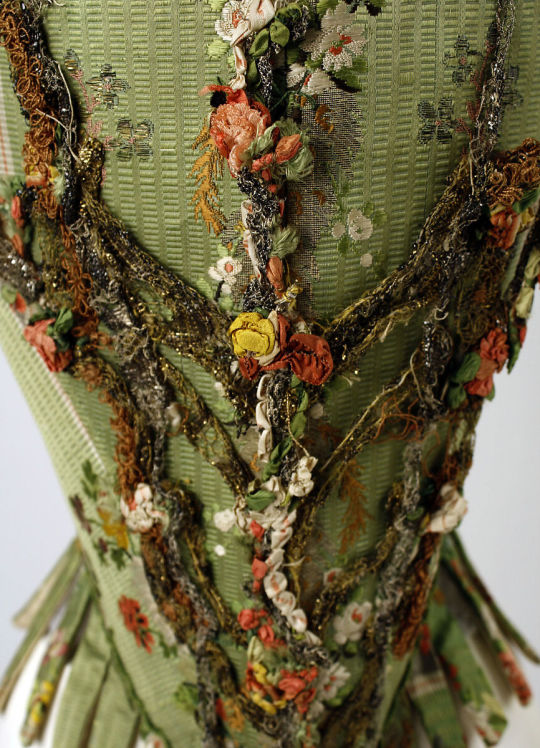
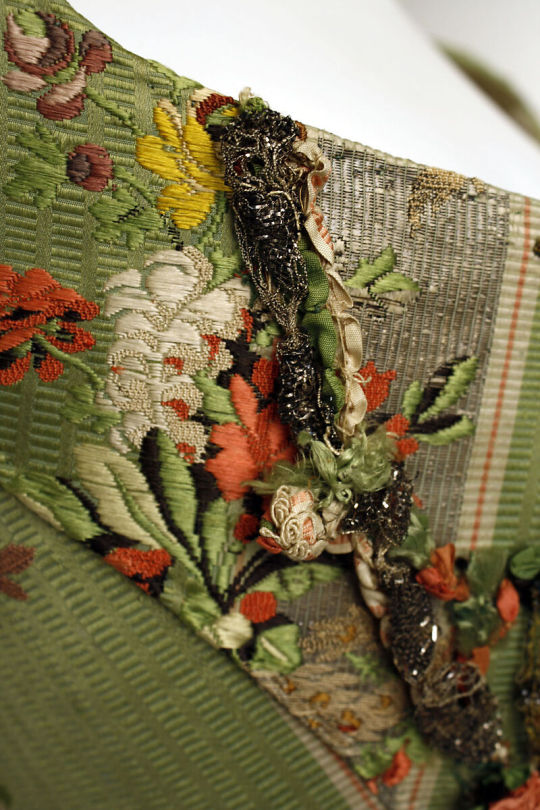
Bodice, 18th century, European
6K notes
·
View notes
Text
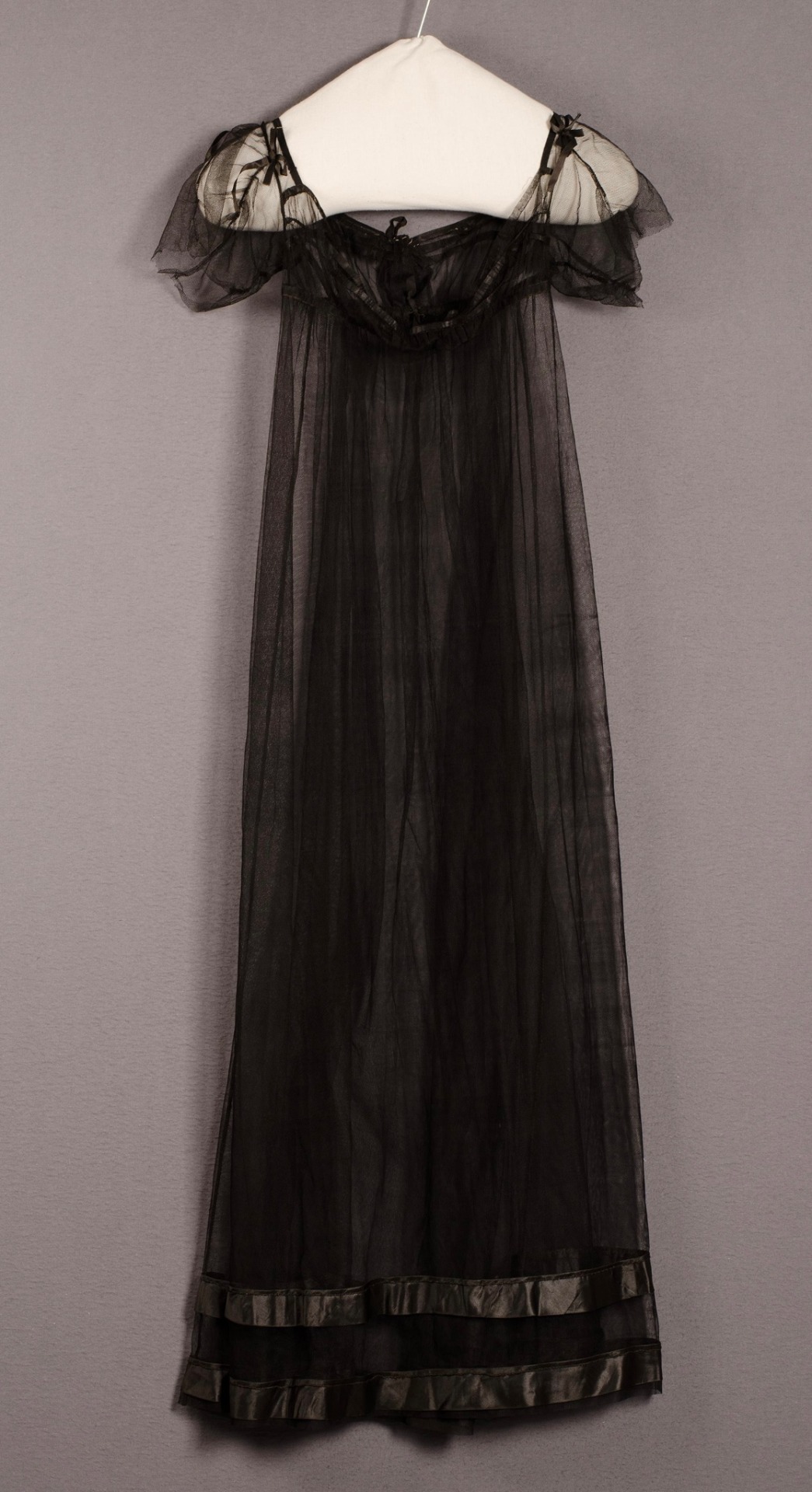

Black empire style gown
Tulle and silk
C. 1800-1810, Napoleonic era
Centraal Museum, Utrecht
#dresses#dress#centraal museum#CMU#fashion#napoleonic era#napoleonic#first french empire#french empire#19th century#france#history#tulle#silk#pretty#fashion history#history of fashion#historical fashion#1800s#regency#empire style#regency fashion#jane austen#1800s fashion
4K notes
·
View notes
Photo
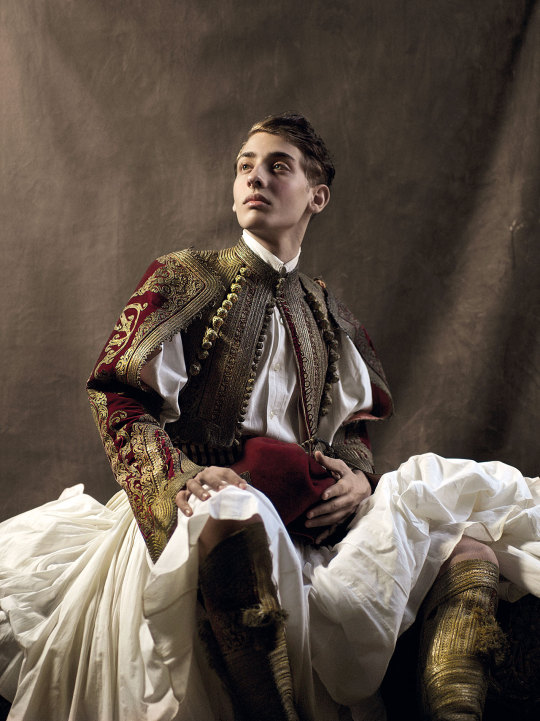



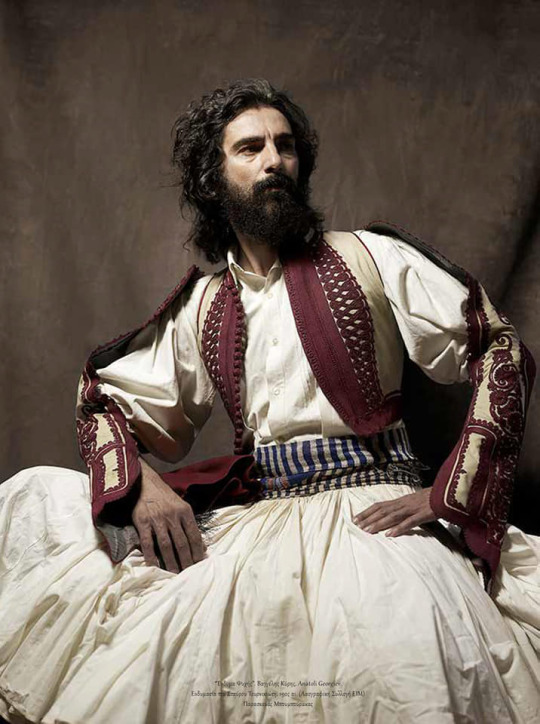

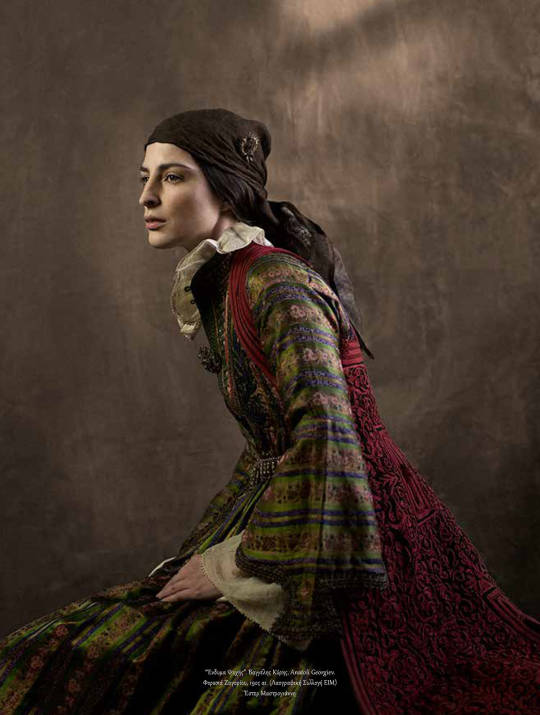
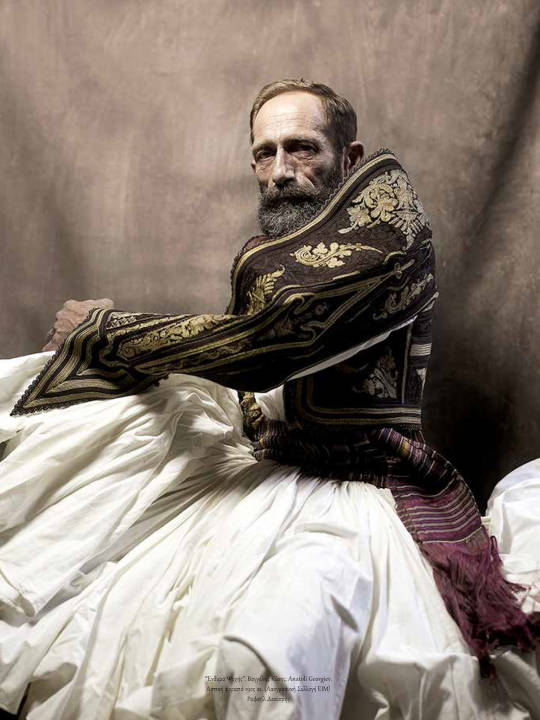
Newly exhibited photos from the project Ένδυμα Ψυχής - Raiment of the Soul, collaboration of photographer Vangelis Kyris and Bulgarian embroidery artist Anatoli Georgiev who present Greek traditional costumes, which are exhibits of the National Historical Museum of Greece. The exhibition is currently hosted in the Acropolis Museum, until March.
Attire of King Otto of Greece, 19th century.
Dress from Nisyros island, 19th century.
Dress from Zakynthos (Zante) island, 18th century.
Attire of Dimitris Mavromichalis, aide-de-camp of King Otto.
Attire of Stavros Tournikiotis, 19th century.
Urban dress of Old Athens, 18th century.
Dress from Zagori, 19th century.
Urban attire, 19th century.
See more photos of the project x, x, x and x.
#greece#europe#historical fashion#traditional clothing#folk clothing#vinatge#fashion#photography#culture#history#national historical museum#king otto#nisyros#zakynthos#zante#athens#zagori#dodecanese#greek culture#heptanese#ionian islands#attica#sterea hellas#central greece#ioannina#epirus#greek islands#mainland#large
9K notes
·
View notes
Text



Met Costume Institute
Walking dress. British. ca. 1830
#fashion history#historical fashion#antique#1800#1830s fashion#1830s#extant garments#met museum#floral#this is my absolute favorite 1830s dress but I don't know if it's been posted before
615 notes
·
View notes
Text
the Met Museum's weirdly fetishizing description of that one gorgeous blue velvet Victorian cape squats in my mind without paying rent
this is the cape:

Pretty! Made by Emile Pingat! Very Gothic! love it.
this is part of the description:
The rich color of the royal blue velvet is evocative of the original wearer who at that point in time would have been seen as a precious jewel who required continual attention and assistance. That perceived helplessness is also reflected in the cape's lack of armholes, which would limit easy mobility.
...I. what.
I suspect it's blue because she liked blue and commissioned it that way (or selected that one ready-made for the color). and, my guy, there is clearly a big front opening through which one can reach for things. would you say that about a men's cape without armholes? they definitely existed, and plenty of women's capes DID have them. how does this No Armholes For Female Helplessness theory play out in view of those facts?
I also suspect this person wrote that part of the description one-handed
#dress history#met museum#victorian#fashion history#even big institutions can get it wrong or at least get it Weird and Uncomfortable
1K notes
·
View notes
Text
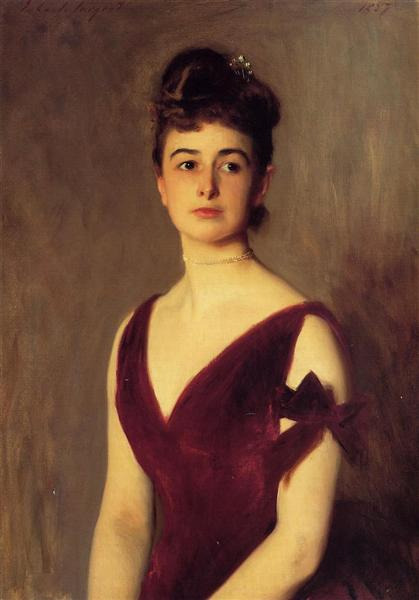
John Singer Sargent (American, 1856-1925) • Portrait of Louise Pomeroy Inches • 1887 • Museum of Fine Arts, Boston

Evening Dress • Unidentified Maker • American • Silk velvet with silk plain weave lining

How wonderful that such a well-preserved dress exists to enliven a famous portrait painting! This dress is one of my favorites for a couple of reasons – firstly, I love velvet and this silk velvet is the real deal – gorgeous. Secondly, I've seen the portrait many times at the MFA in Boston. The dress was in a glass case at the blockbuster Fashioned by Sargent exhibition also at the MFA.
I've read that Louise Inches was expecting her third child when she sat for this portrait and that the dress had been designed to accommodate extra panels as her figure expanded. She and Sargent got on well. Both were music lovers and accomplished musicians.
#portrait#art#painting#art history#john singer sargent#female portrait#society portrait#american expat artist#artist#portraitist#museum of fine arts boston#paintings i've seen#historic dresses#fashion history#late 19th century art#fine art#the resplendent outfit#1880s fashion history
270 notes
·
View notes
Text

Belt Buckle from Maria Ponsee, Austria dated between 500 - 800 CE on display at the Kunsthistorisches Museum in Vienna, Austria
With almost 100 graves, Maria Ponsee is the largest Langobardian burial site in Austria. It was excavated in 1965 and 1966 by the Federal Monuments Office and is one of the few cemeteries from this period to have been completely examined. Three ethnic groups buried their deceased here: Langobards, Thuringii and Romani or Suebi. What remains in these graves is what was left by grave robbers over the centuries.
Photographs taken by myself 2022
#art#archaeology#history#fashion#austria#austrian#migration period#kunsthistorisches museum#vienna#barbucomedie
227 notes
·
View notes
Text

The Wodaabe People - Nigeria
#nigeria#aesthetic#photography#jewelry#jewellery#fashion#style#runway#couture#culture#museums#history#black#africa#black tumblr
189 notes
·
View notes
Link
The opening image gives you some idea of the range of 300 pairs of shoes that were worn, or not really worn, by different people to convey different identities that show up in this show.
Like wearing women wearing high heels to look glamorous, or people in athletic shoes hoping to look athletic without breaking a sweat, or crazy looking shoes that are actually impossible to walk in so they are not worn at all, just stared at.
The show runs through the end of 2022 and there is a book to accompany it if you can’t get there.
#fit#museum at fit#shoes#vintage shoes#shoes anatomy identity magic#costume history#dress history#fashion history#fashion history museum#costume history museum#18th century fashion#19th century fashion#20th century fashion#21st century fashion
4 notes
·
View notes
Text

Mountaineering Ensemble, 1890s. From FIDM Museum
#imagine wearing this as an old timey archaeologist!!#fashion#history#1800s#late 1800s#victorian#historical fashion#period clothing#museum#outfits#my post#fashion inspo
517 notes
·
View notes
Text


Watch
c.1900
Indianapolis Museum of Art (Accession Number: 73.70.38)
#watch#fashion history#historical fashion#accessories#turn of the century#edwardian#1900#1900s#20th century#red#gold#enamel#diamond#indianapolis museum of art
926 notes
·
View notes
Text


Bejeweled Armoured Yashmak By Shaun Leane for Alexander McQueen: Spring/Summer (2000)
Designed for McQueen’s Spring/Summer 2000 collection, which initially explored the clashing of Middle Eastern and Western cultures, The Yashmak, a veil concealing all of the face except the eyes, which is worn by some Muslim women in public. This metal Yashmak is part of a collection of jewelry that was designed for Alexander McQueen by Leane, who was not only a collaborator of McQueen’s, but also a good friend. Considered to be one of the top twenty most spectacular pieces in McQueen’s oeuvre, the Yashmak is created from aluminum plates cast from molds. The plates are linked by chains and inset at the center with red, Cabochon Swarovski crystals.
#alexander mcqueen#yashmak#shaun leane#bejeweled#armor#fashion#couture#swarovski#swarovsky crystals#mcqueen#2000s nostalgia#aesthetic#90s#y2k aesthetic#y2k#fashion aesthetic#fashion facts#fashion history#iconic fashion#metropolitan museum of modern art
715 notes
·
View notes
Text
Emile Pingat, Dinner Dress, 1878.



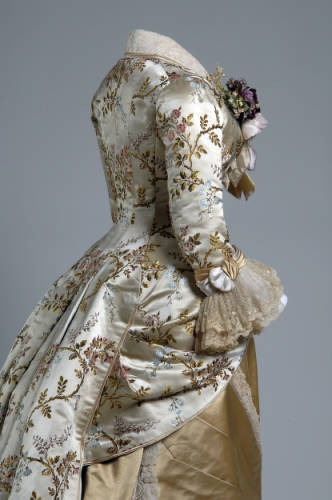

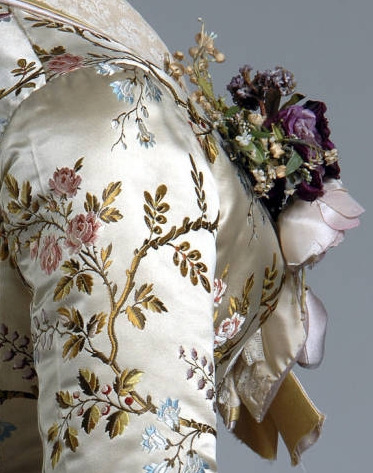

#I found pictures in different sources#some say that this is from Chicago History Museum at Getty Images but I couldn't find it there#so...#victorian#victorian era#victorian fashion#19th century#fashion history#historical fashion#dress
869 notes
·
View notes